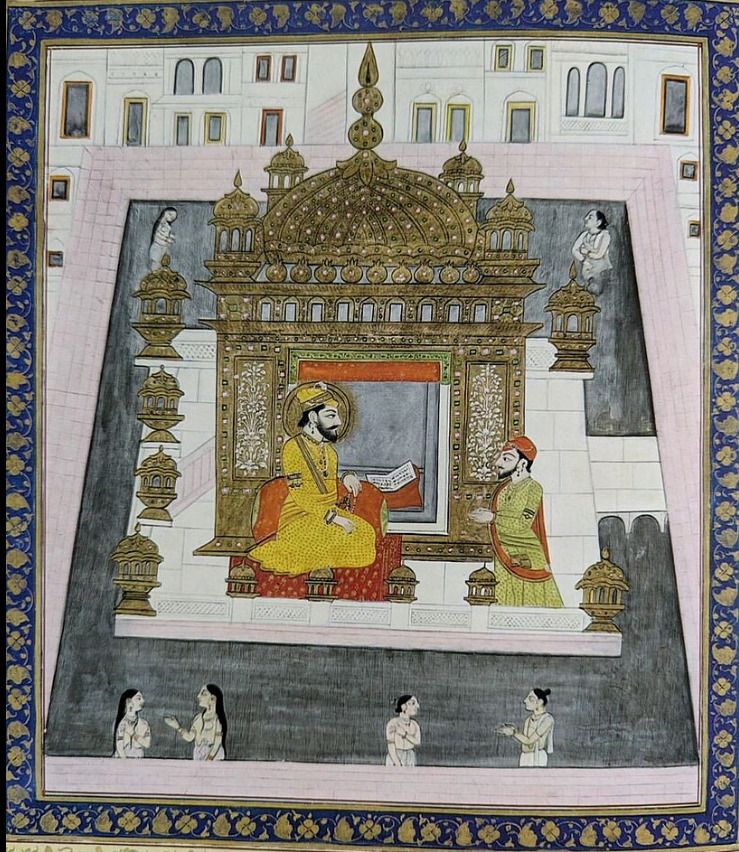Sikhi and Yoga
This is a painting of Harmandir Sahib from 1860. On the same Parikrama, one can see Yogis performing Yoga. One can see pilgrims performing Surya Namaskar. There are Brahmans writing down Panchanga. Sadhus applying Tilak to pilgrims.
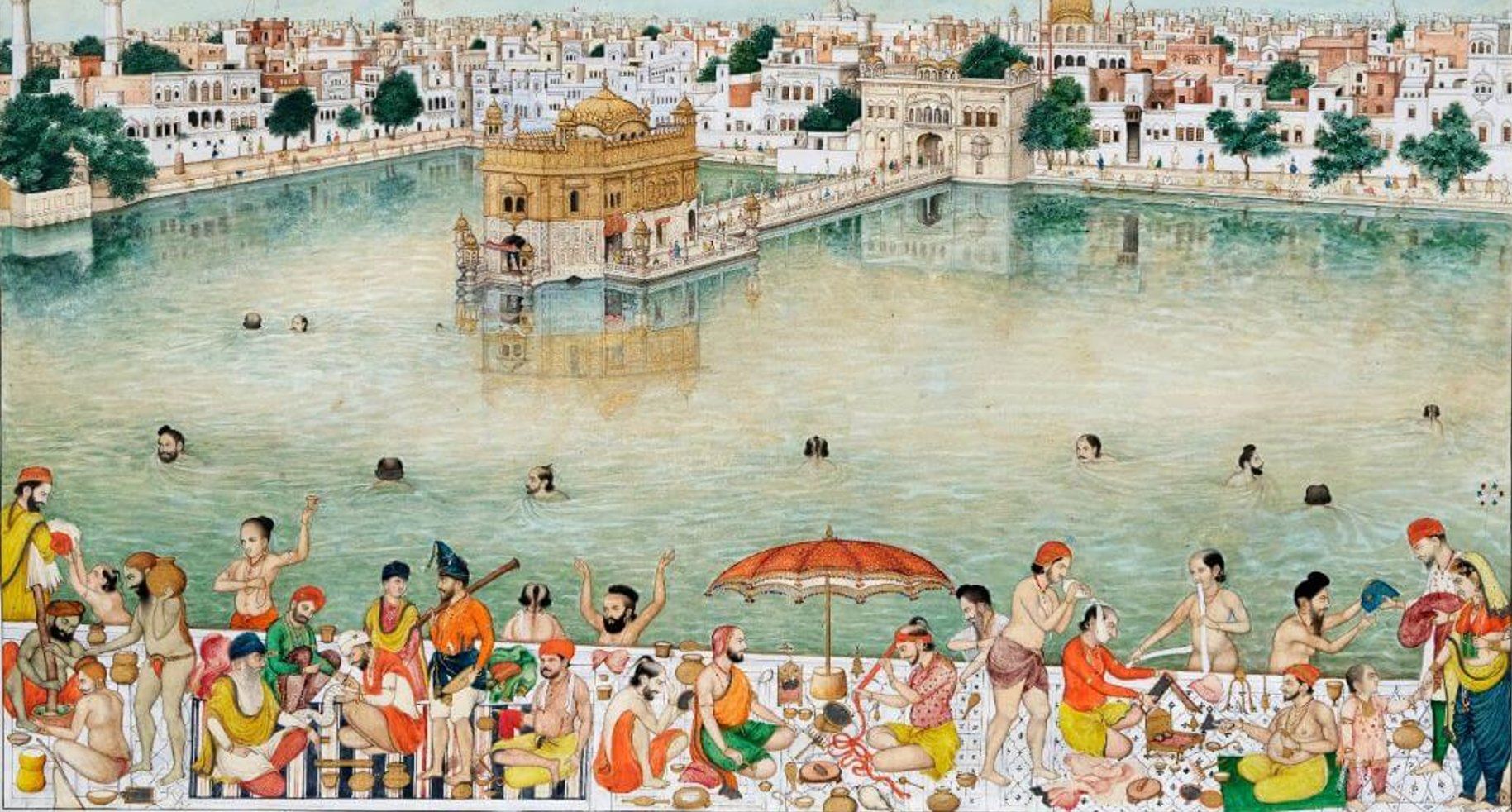
Here is another old picture of Yogis and Udasis meditating on the Parikrama of Harmandir Sahib. Picture taken c. 1905
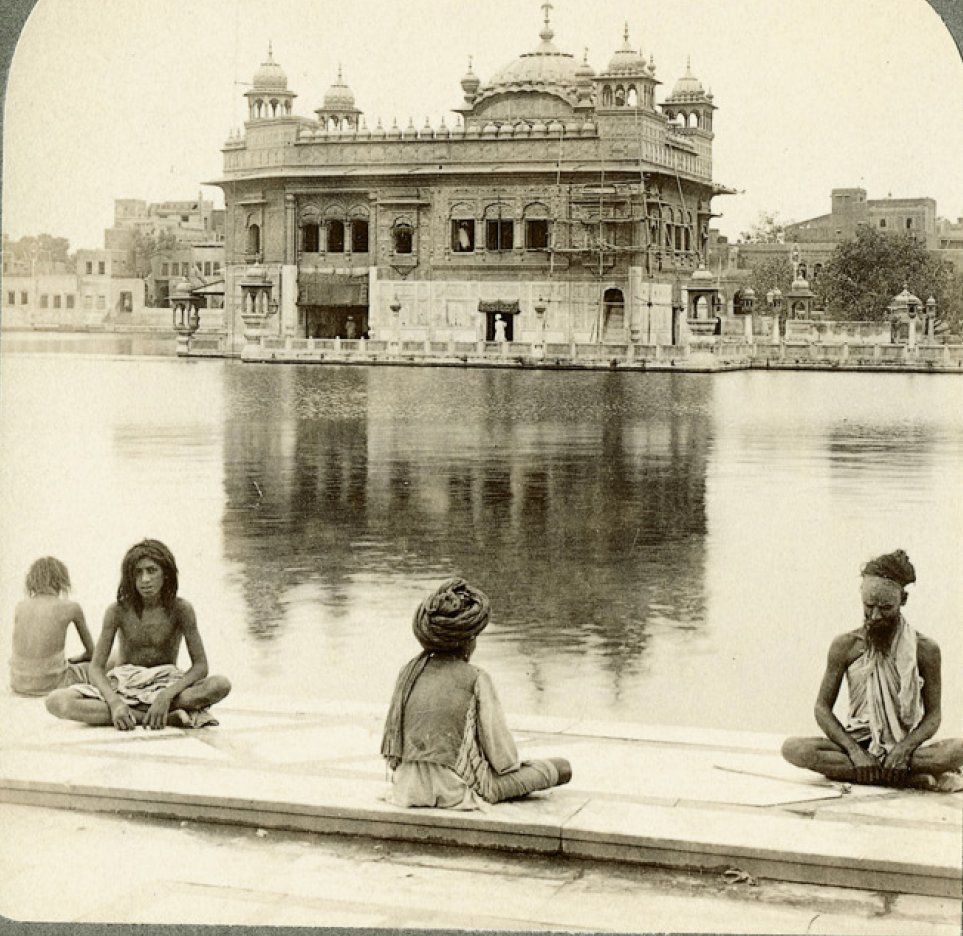
Here is another old painting of Harmandir Sahib. A Brahman performs Havan on the Parikrama of Harmandir Sahib while a Naga Sadhu receives veneration from a Sikh devotee. While another pilgrim performs Surya Namaskar in the background.
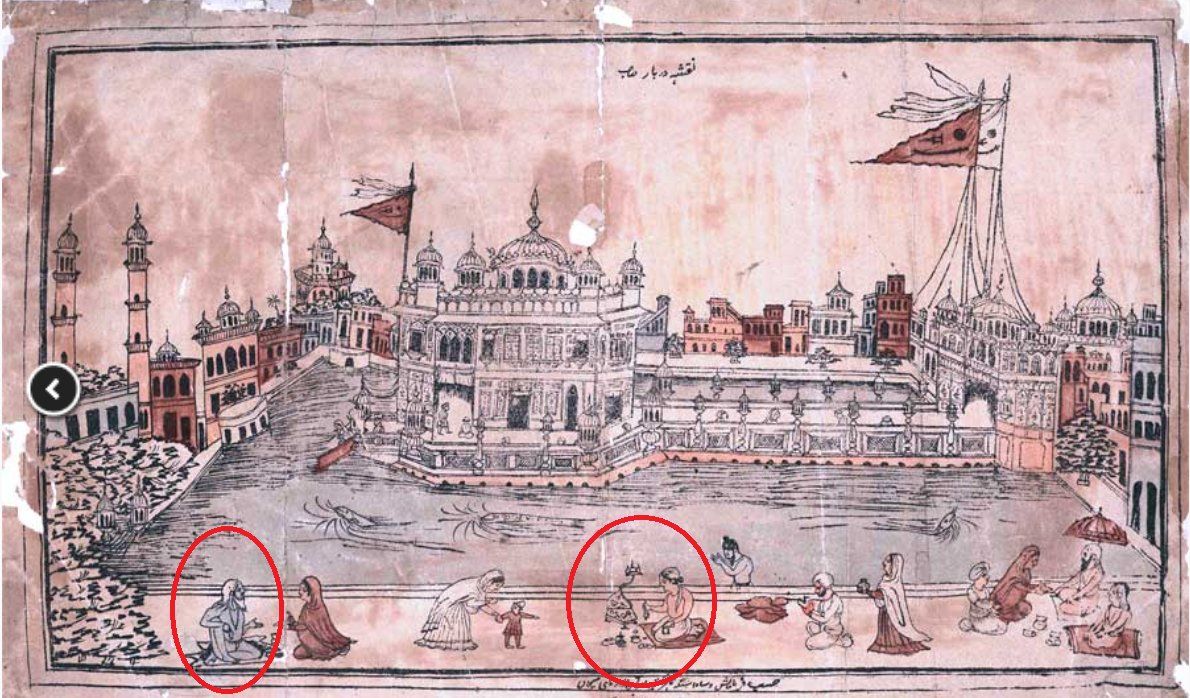
This is an image of Sri Chand Maharaj. Sri Chand Maharaj was the eldest son of Guru Nanak. He was a great Yogi. He founded a sect of wandering ascetic Yogis known as Udasis. Sri Chand Maharaj was greatly honored by Sikh Gurus. Sikh Guru enrolled their children as disciples of Sri Chand Maharaj. Therefore, Guru Amar Das admitted his son Baba Mohan as disciple of Sri Chand Maharaj. Guru Hargobind also admitted his son Baba Gurditta into the Udasi Sampradaya.
Before the English influenced Tat Khalsa changed everything, Sikh Sampradaya and Yogic Udasi sampradaya were two sides of the same coin.
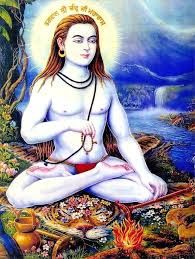
A painting which shows Sikh Guru Amar Das initiating his eldest son Baba Mohan into the Yogic Udasi Sampradaya. Baba Mohan considered Sri Chand Maharaj as his Guru and obediently served him.
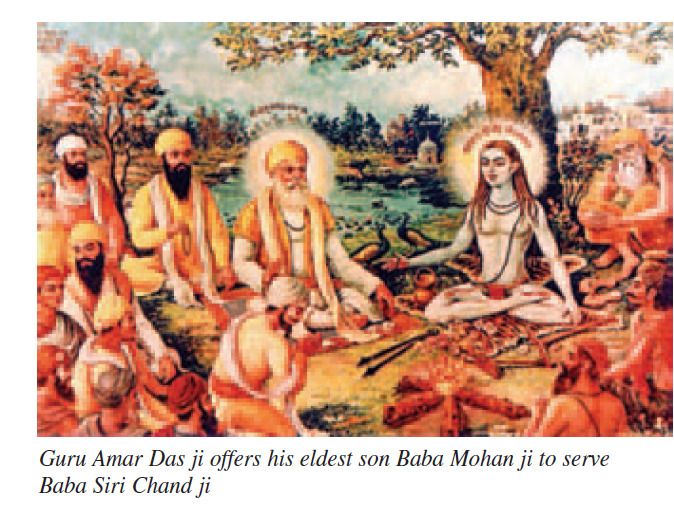
When the great Yogi Sri Chand Maharaj visited Amritsar, he was respectfully and warmly received by Guru Ram Das. Sri Chand Maharaj noticed that Guru Ram Das had a very long beard. He asked why. Guru Ram Das said with great humility-‘It is to wipe the lotus feet of great men like you’ and actually bent forward to demonstrate. Sri Chand caught him in a warm embrace. This was the kind of respect Guru Ram Das showed to the great Yogis.
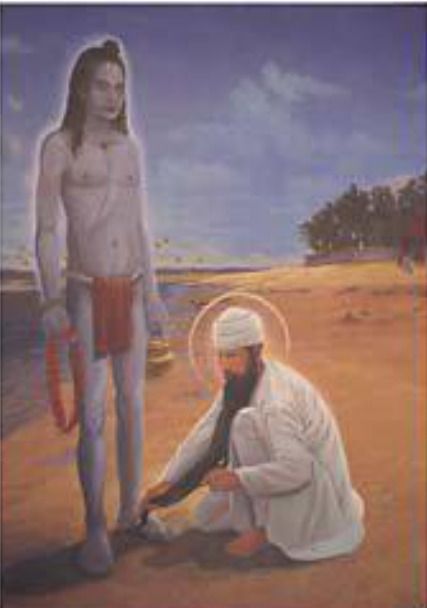
It is said that the name Ramdaspur was changed to Amritsar by the suggestion of Yogi Sri Chand Maharaj.
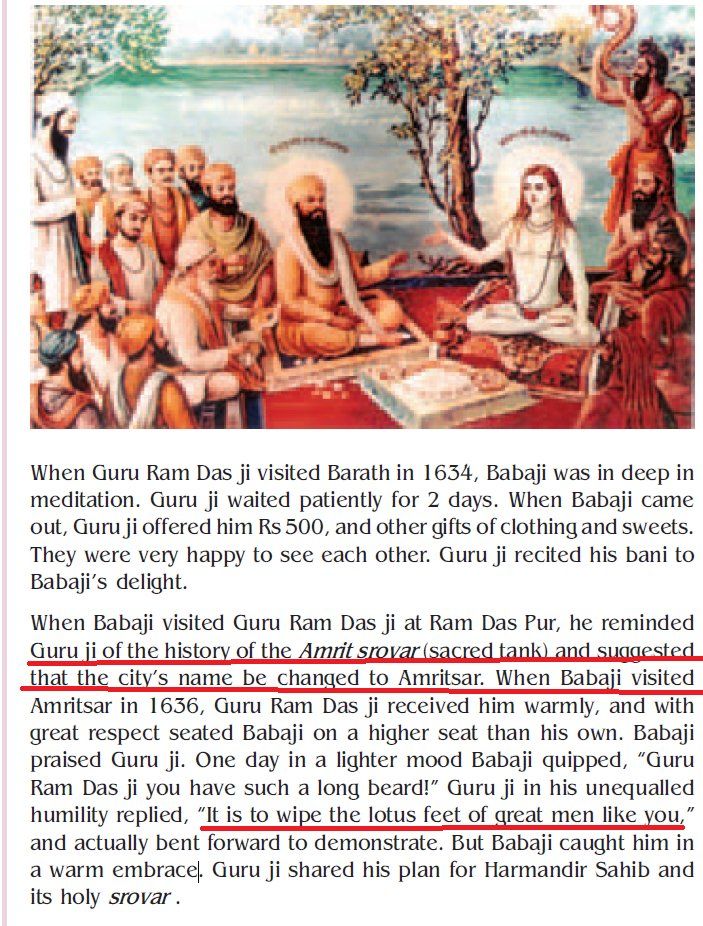
A painting which shows Sikh Guru Hargobind Ji presenting his eldest son Baba Gurditta to Sri Chand Maharaj. Baba Gurditta succeeded Sri Chand Maharaj and became the second Guru of Udasi Yogi Sampradaya.
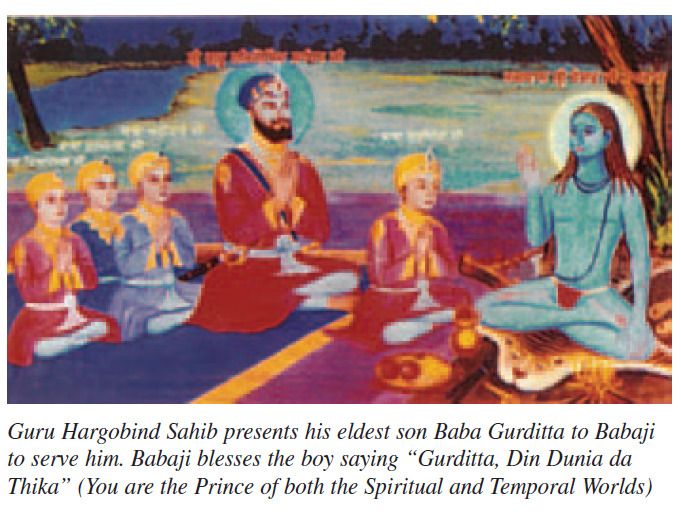
A picture of Udasi Yogis. 1860. One would think that these Udasis were Hindu. But they were Sikhs. Before Tat Khalsa radicalization, Sikhism had two branches
- Grihasta (householder) branch.
- Wandering ascetic(Udasi) branch.
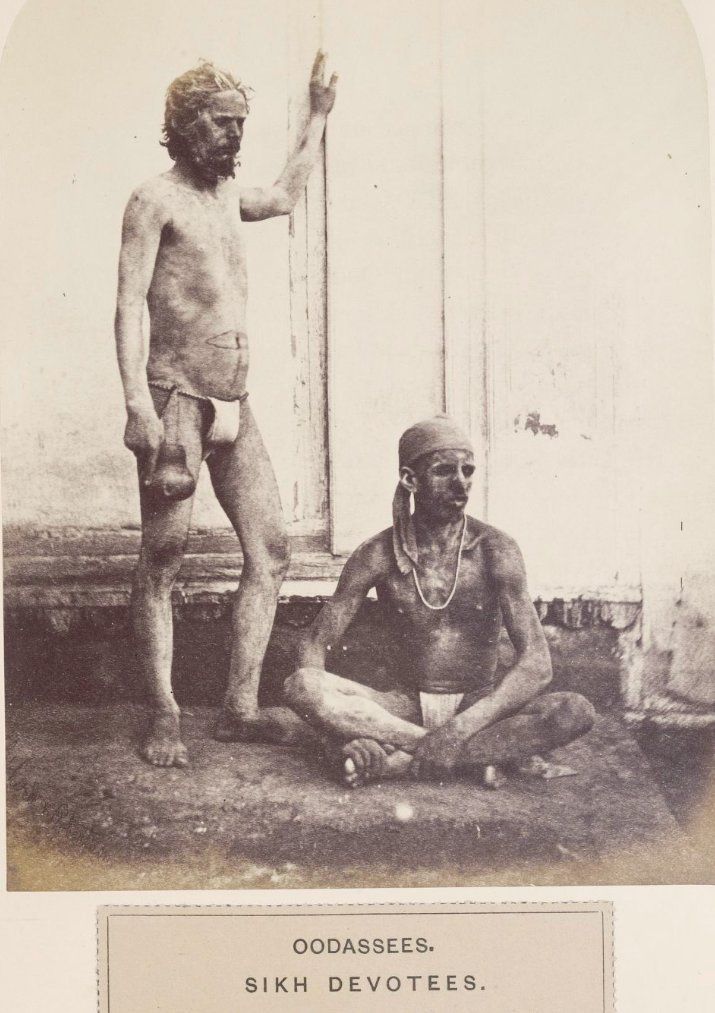
- Son of Sikh Guru Nanak, Sri Chand became first Guru of Udasi Sampradaya.
- Son of Sikh Guru Hargobind, Baba Gurditta became second Guru of Udasi Sampradaya
- Son of Udasi Guru Gurditta, Guru Har Rai became the 7th Guru of Sikhs
Today, Radicalized Tat Khalsa proponents will tell you that Sikhism had nothing to do with Hinduism, Yoga or Udasi Sampradaya.
If Yoga had nothing to do with Sikhism, why did Sikh Gurus initiate their children into a Yogic Hindu Samrapdaya? Udasi is an orthodox Hindu Yogic sect which considers Vedas as supreme. Why did Sikh Guru enroll their children into this sect if Sikhism had nothing to do with Hinduism or Yoga? How is it that the son of a great Hindu guru of Yogic sampradaya became 7th Guru of the Sikhs?
An old painting which shows a Sikh Guru (perhaps Guru Arjan Dev Ji) seated in the Golden Temple at Amritsar. Notice the Brahmans performing Sandhyavandana in the Parikrama.
